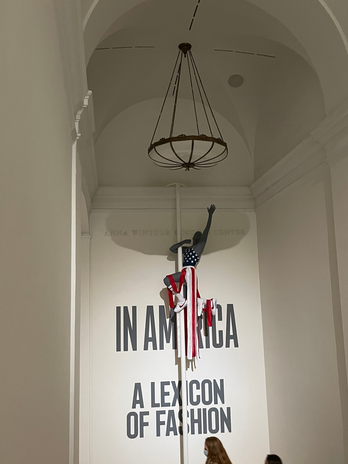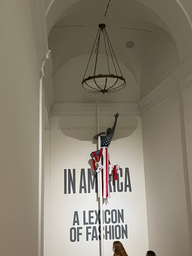After a bleak, sweatpants-filled, drought of fashion, the Met Costume Institute finally reopened on September 14th, and will be showing until September 5th, 2022. This extremely anticipated return to fashion seemed to be immensely underwhelming and followed a quite underwhelming gala on September 13th this year.
The main inspiration costume institute director Andrew Bolton used for this exhibit came from a patchwork quilt made by Adeline Harris Sears in 1966. Bolton also drew from how fashion in America is like a quilt, as Jesse Jackson said in 1984, “…many patches, many pieces, many colors, many sizes, all woven and held together by a common thread.”
While this exhibit featured so many beautiful and exquisitely created garments, the exhibit fell flat, especially compared to previous exhibits. First of all, this year the location of the exhibit was moved from its normal designated spot to a crowded, random, and discombobulated new area. It made the viewing experience much less enjoyable and created such a fragmented understanding of the exhibit.
It felt as though none of the three rooms really fit together. The first room was filled to the brim with pieces in a maze-like space that did not lend itself well to the crowd, the second room was easy to miss and had a dismal amount of looks compared to the other two, and the last room seemed like it should have been first, but because of foot traffic, was usually seen on the way out.
All the articles of clothing were supposed to resemble an aspect of American fashion but besides the designer’s origins, nothing about them seemed uniquely American. Not even Anna Wintour can convince us that joy, conviction, seductiveness, and passion are not words that any other culture could use to describe fashion.
Even outside of the conceptual problems, the mannequins used were plastic, appeared cheap, and did not match each other. Some redeeming moments were when you could directly see the influence from one garment to the next, which transcended both generations and trends in American fashion. It was also very special that all of the garments were on display without any glass or large amount of space between the viewer to really understand the beauty in the details.
Overall, I fully believe that this year the Met unfortunately missed the mark. We spent the last year analyzing, debating, and fighting for what it means to be American, and while it seemed a bit performative to even choose this theme, there was no attempt to depict the current state of America through fashion. In an age where Americans are using fashion as one of the main aspects of politics and culture, nothing in the exhibit resembled this force that fashion has been used for for generations. This concept of fashion and politics working together so closely is most definitely increasing in popularity but has been around for generations and is something that is uniquely and distinctly American. Aside from politics, simply showing diversity in American culture through fashion was seemingly missing.
The theme, its timing, and its execution would have made so much more sense to the culture of the fashion industry had the exhibit paid more attention to these things. With all this being said, this was just a sneak peak for next year, which holds the same but more expanded theme, so let’s cross our fingers and pray for the 2022 showing.


